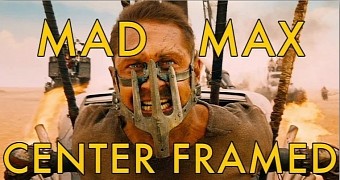For all the crashes and the explosions and the fighting that happen in every scene of “Mad Max: Fury Road,” the latest from writer / director George Miller, not once do you as viewer feel overwhelmed or as if you’re losing track of the action.
Whereas most action films employ an editing technique called “Chaos Cinema,” in which the action is spread throughout the entire frame at all times, which makes viewing more challenging because the eye and the brain can’t keep track of all the moving elements, “Mad Max” relied heavily on the opposite of it, “Crosshair Framing,” or “Center Framing.”
That means that everything that happened in the film happened only in the center of the screen, thus making the narrative more coherent and easier to follow. We can thank Film Editor Margaret Sixel for that, who acted on Miller’s express command.
Sixel had 480 hours of footage to begin with, from which she came up for the final cut with 120 minutes of footage and 2,700 individual shots. Most of these employ “Center Framing.”
The video below explains how this technique was applied to “Fury Road,” including how Miller was constantly barking instructions to put an actor or a vehicle “in the crosshairs,” so that Sixel could edit it accordingly.
“Mad Max: Fury Road” came out on May 15, and stars Charlize Theron, Tom Hardy and Nicholas Hoult. It’s the fourth “Mad Max” film so far, with a fifth believed to be in the pipeline, with the working title “Mad Max: The Wasteland.”

 14 DAY TRIAL //
14 DAY TRIAL //